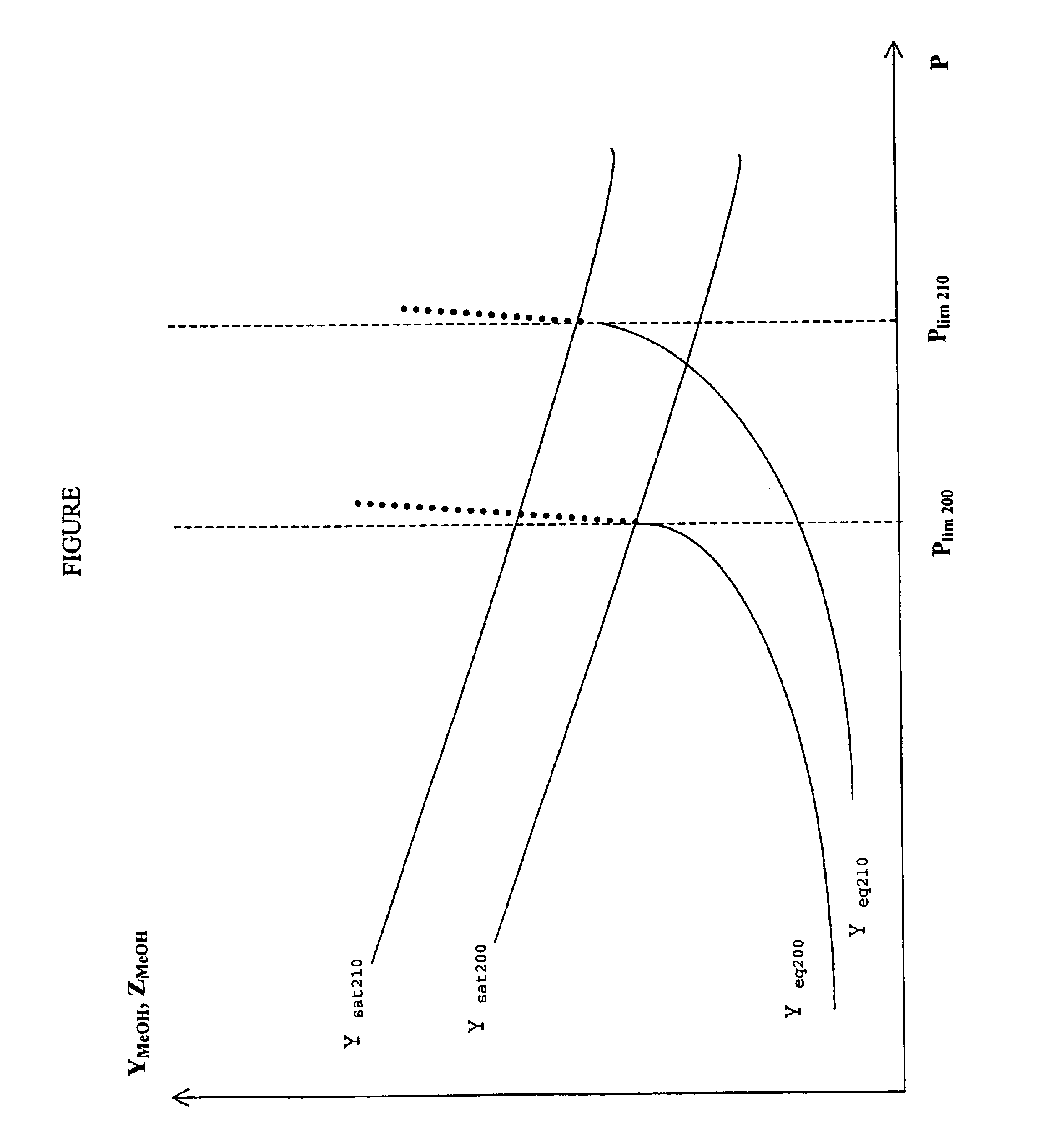Process for the preparation of methanol
a technology of methanol and methanol slurry, which is applied in the field of process for the preparation of methanol, can solve the problems of limited the range of compositions of feed gas that can be treated in a tubular reactor, inefficient heat removal, and exothermic and difficult processing, and achieves high single-pass conversion, high temperature, and high cost of producing synthesis gas
- Summary
- Abstract
- Description
- Claims
- Application Information
AI Technical Summary
Benefits of technology
Problems solved by technology
Method used
Image
Examples
example 1
[0052]A 120 ml autoclave reactor was loaded with active catalyst and methanol. Activated MK-101 (pulverised) is employed as catalyst. The autoclave was connected to a gas reservoir that contained a mixture of synthesis gas “A” comprising of hydrogen (60 vol. %), nitrogen (5 vol. %), carbon monoxide (30 vol. %) and carbon dioxide (5 vol. %) at 21° C. and 162 bar. The volume of the gas reservoir was 0.5 l. The process was a closed batch system since neither gas nor liquid was removed from the system until the reaction was completed. The connection between the reactor and gas reservoir was opened. The reaction occurred in the autoclave at a constant pressure of 116 bar and a constant temperature of 202° C. The autoclave was agitated by stirring at 500 rpm. As the reaction proceeded, carbon dioxide and hydrogen were converted to methanol and water. The produced methanol and water condensed to liquid. Carbon monoxide reacted with water to produce hydrogen and carbon dioxide in the water ...
example 2
[0054]Example 1 was repeated at a pressure of 109 bar and a temperature of 180° C., but with synthesis gas mixture “B” comprising of 74 vol. % hydrogen, 25.5 vol. % carbon monoxide and 0.5 vol. % carbon dioxide. A fresh catalyst suspension Pwas employed with activated catalyst. The gas was taken from the gas reservoir at 21.2° C. and a pressure of 168.9 bar. Agitation was maintained at 500 rpm. Reaction continued spontaneously until a gas reservoir pressure of 130.6 bar. 6.3 g of methanol product was produced.
example 3
[0055]Example 1 was repeated, at a pressure of 137 bar and a temperature of 200° C. with the synthesis gas B from Example 2. The methanol suspension consisted of around 0.8 wt % of water originating from previous experiment. The same catalyst suspension was employed as in Example 2. The gas was taken from the reservoir at 170.4 bar at 21.6° C. The agitation rate was 500 rpm. At a reactor pressure of 131.4 bar, the reaction was terminated. The calculated product was 6.3 g.
[0056]
TABLE 2Conditions for methanol productionPressureTemperatureGas(bar)(° C.)ΔP (bar)MeOH (g)A11620283.013.4B10918038.36.3B13720038.96.3C13721047.67.8D10918040.06.8
PUM
| Property | Measurement | Unit |
|---|---|---|
| pressure | aaaaa | aaaaa |
| temperature | aaaaa | aaaaa |
| molar ratio | aaaaa | aaaaa |
Abstract
Description
Claims
Application Information
 Login to View More
Login to View More - R&D
- Intellectual Property
- Life Sciences
- Materials
- Tech Scout
- Unparalleled Data Quality
- Higher Quality Content
- 60% Fewer Hallucinations
Browse by: Latest US Patents, China's latest patents, Technical Efficacy Thesaurus, Application Domain, Technology Topic, Popular Technical Reports.
© 2025 PatSnap. All rights reserved.Legal|Privacy policy|Modern Slavery Act Transparency Statement|Sitemap|About US| Contact US: help@patsnap.com

